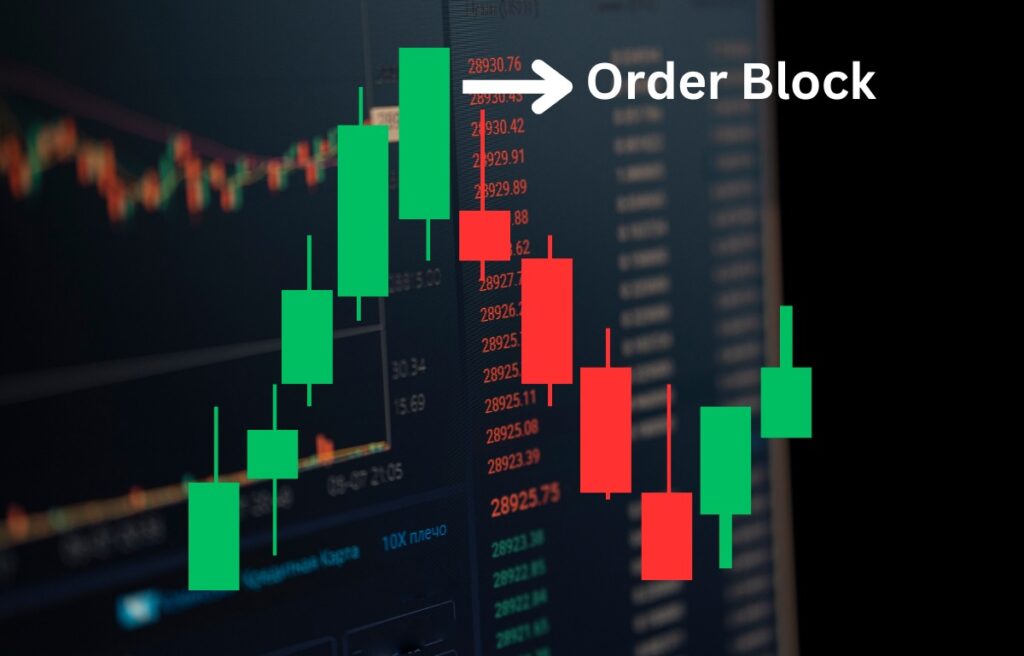Order blocks have become a critical concept in trading, particularly for those who focus on price action, institutional trading strategies, and market structure analysis. If you’re involved in the world of trading or just starting, you’ve likely come across the term. But what is an order block and how do you identify it in the charts to optimize your trading strategy? This article will delve deep into the intricacies of order blocks and provide insights into identifying them effectively.
What is an Order Block?
An order block in trading is a consolidation zone on a price chart where large institutional traders or market participants place a significant amount of buy or sell orders. These large orders can greatly influence the price movement of a security, whether it’s a stock, currency, or cryptocurrency.
Order blocks represent areas of high market interest where “smart money” (institutional investors like hedge funds, banks, or large corporations) enters or exits the market. Unlike retail traders, institutions can’t simply place all their trades at once because it would disrupt the market. Instead, they place their trades in segments, creating order blocks.
In essence, order blocks are supply and demand zones created by institutional activity, which causes price to consolidate for a certain period before breaking out in a specific direction. These blocks are key areas where the price is likely to react, making them important zones for retail traders to recognize.
Types of Order Blocks
There are two main types of order blocks, based on the nature of the institutional orders:
Bullish Order Blocks:
These are areas on the chart where institutions have placed a large number of buy orders. A bullish order block typically acts as a support zone, indicating an area where price is likely to reverse and head upward. Traders look for bullish order blocks to identify potential buying opportunities.
Bearish Order Blocks:
These are zones where institutions have placed a large number of sell orders, forming a resistance zone. Bearish order blocks signal areas where price is likely to reverse downward. Traders use these zones to anticipate selling opportunities or to avoid potential market retracements.
Why Order Blocks Matter in Trading
Order blocks are essential for traders because they provide insight into areas of institutional interest. While retail traders might trade based on short-term signals or emotions, institutional traders have much larger capital at stake and are focused on long-term gains. As a result, they leave behind clues in the form of order blocks that retail traders can use to make informed decisions.
Here are a few reasons why order blocks are significant in trading:
- Predictive Power: Order blocks often indicate future price movements. Since these zones are created by large institutional orders, they tend to act as strong support or resistance levels where price is likely to react.
- Smart Money Tracking: By identifying order blocks, traders can follow the footprints of institutional traders and align their strategies with “smart money,” improving the chances of profitable trades.
- Risk Management: Knowing where the price is likely to react allows traders to place stop losses and take-profit orders in more precise locations, reducing risk and increasing reward potential.
How to Identify an Order Block on the Chart
Identifying order blocks may seem challenging at first, but with practice, it becomes easier to spot these zones. Here are some key steps to help you identify order blocks effectively:
1. Look for Price Consolidation Areas
Order blocks are often found in areas where the price consolidates for a certain period before making a significant move in one direction. Consolidation refers to a sideways movement in the market, where the price fluctuates within a specific range without trending upward or downward. This consolidation period is when institutional traders are likely entering or exiting the market in large quantities.
To identify a consolidation area:
- Observe tight price ranges where multiple candles form without clear directional movement.
- Look for price movements that seem to “stall” after a previous strong move.
2. Identify Strong Breakouts
After a period of consolidation, a strong breakout in price often signals the creation of an order block. The breakout can either be upward or downward, depending on whether the block is bullish or bearish. A breakout occurs when the price moves decisively out of the consolidation zone with higher-than-usual volume and momentum.
To identify breakouts:
- Check for long candlesticks that break through a previous consolidation range.
- Ensure the breakout is accompanied by high trading volume, which confirms the strength of the move.

3. Use Candlestick Patterns to Confirm Order Blocks
Candlestick patterns can provide valuable clues when identifying order blocks. Certain patterns indicate the presence of institutional buying or selling, such as:
- Bullish Engulfing Pattern: This occurs when a large bullish candle completely engulfs the previous smaller bearish candle, signaling that buying pressure has overtaken selling pressure.
- Bearish Engulfing Pattern: The opposite of a bullish engulfing pattern, this indicates strong selling pressure after a previous period of buying.
By recognizing these patterns in a consolidation zone, you can better identify the location of an order block and predict potential price movements.
4. Focus on Key Levels of Support and Resistance
Order blocks often coincide with key support and resistance levels on a price chart. These levels are areas where price has historically had difficulty moving beyond (resistance) or falling below (support). Institutions often place their large orders at these significant price levels to ensure they get the best possible price for their trades.
To identify support and resistance:
- Look for areas on the chart where price has reversed multiple times.
- Draw horizontal lines across the chart at these levels to mark potential order blocks.
5. Monitor Volume for Confirmation
High trading volume is a critical factor when identifying order blocks. When institutional traders are involved in the market, the volume of trades tends to spike, particularly during periods of price consolidation and breakouts. Use a volume indicator to confirm whether a potential order block is supported by institutional activity.
If the volume increases during a breakout from consolidation, it’s likely that the move was initiated by large market participants. This is a strong confirmation that an order block is in play.
6. Observe Market Structure
Understanding the overall market structure is essential when identifying order blocks. In a trending market, order blocks often form as price moves in the direction of the trend. For example, in an uptrend, bullish order blocks will likely form after a pullback, providing support for the next move upward. Similarly, in a downtrend, bearish order blocks will form as resistance during retracements.
Pay attention to:
- Higher Highs and Higher Lows in an uptrend (bullish order blocks).
- Lower Lows and Lower Highs in a downtrend (bearish order blocks).
Using Order Blocks in Your Trading Strategy
Now that you understand how to identify order blocks, you can integrate them into your trading strategy. Here’s a basic approach:
- Entry Strategy: After identifying an order block, wait for the price to return to the zone. Enter your trade when you see confirmation (like a candlestick pattern) that the price is respecting the order block.
- Stop Loss Placement: Place your stop loss just outside the order block zone. If the price breaks through, it suggests that the order block has been invalidated.
- Take Profit: Use the next significant support or resistance level as your take-profit target. If the price breaks out from a bullish order block, target the next resistance level.
Final thoughts
Incorporating order blocks into your trading strategy can help you align your trades with institutional movements and improve your ability to predict price reactions. By learning how to identify these zones using price consolidation, breakouts, candlestick patterns, volume, and market structure, you’ll gain valuable insights into market behavior and potentially enhance your trading outcomes. With practice, order blocks can become a powerful tool for improving your trade entries, exits, and overall profitability.

